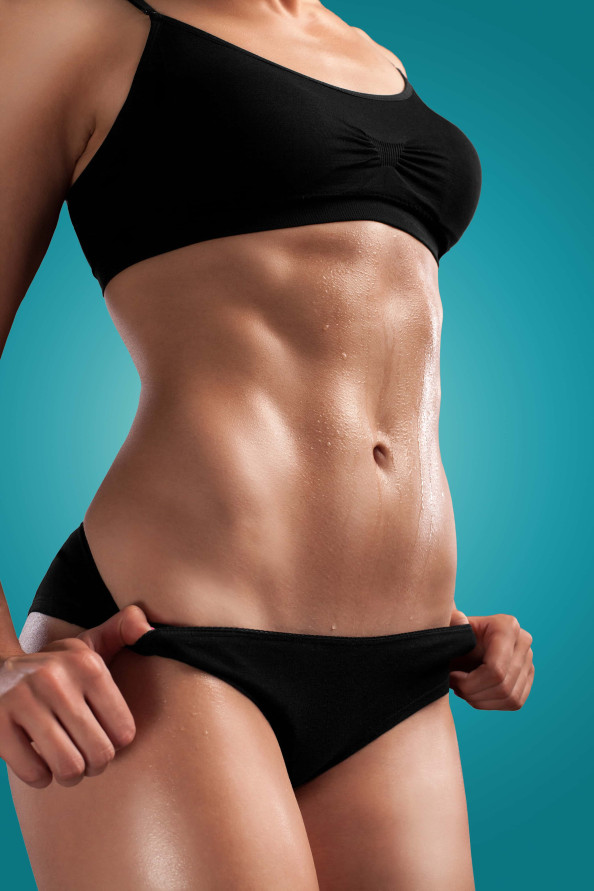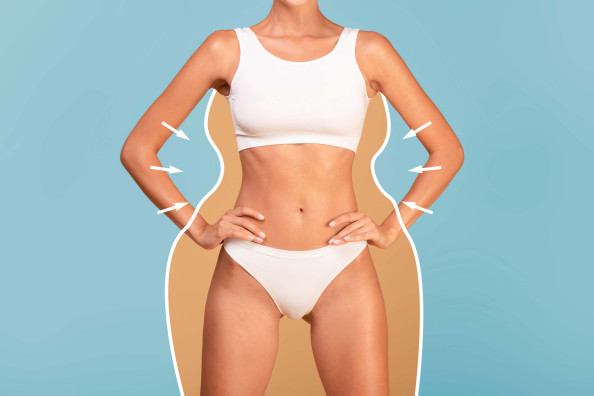Liposuction

What is liposuction?
Suction is used during a surgical treatment called liposuction to remove fat from the abdomen, hips, thighs, buttocks, arms, and neck, among other parts of the body. Additionally, liposuction contours these areas. Liposuction is also known as body contouring and lipoplasty.
More often than not, liposuction is performed for aesthetic purposes; it has no real health benefits. Adopting a healthy lifestyle that includes a balanced diet, frequent exercise, and a regular sleep pattern will certainly help most people attain the same or even better results.
Typically, liposuction is only suggested when lifestyle modifications have failed to produce the expected outcomes. It can be used to treat fat areas that don't respond to diet or exercise.
Each fat cell in an individual grows in volume and size as they acquire weight. There are less fat cells in isolated locations after liposuction.
Before choosing to move forward, people should weigh the benefits and drawbacks of liposuction with their physician. Liposuction ought to be performed only after thorough thought.
The effects are not as striking as they may be.
The following body parts are frequently the focus of liposuction procedures.

During The Operation
Prior to the surgery, which might take one to three hours, patients might be given a general anesthesia.
Lower body treatments can benefit from the use of an epidural. In this instance, the dura, or fluid-filled sac, surrounds the spine, is surrounded by the epidural space into which the anesthesia is given. The legs and abdomen get somewhat numb as a result.
In the event that very small areas need liposuction, a local anesthetic may be employed.
In order to promote optimal fat removal, the patient may be asked to stand during the treatment if local anesthetic is all that is needed.
Numerous liposuction procedures exist.
Tumescent liposuction involves pumping several liters of a saline solution with a vessel-constrictor (epinephrine) and a local anesthetic (lidocaine) beneath the skin in the desired suction area. Through tiny suction tubes, the fat is suctioned out. The most common type of liposuction is this one.
Dry liposuction: The fat is removed without the need for an injection of fluid. These days this is a rare method. The likelihood of bleeding and bruises is increased.
Ultrasonic liposuction, or ultrasound-assisted liposuction (UAL), uses ultrasound energy to power the cannula. On touch, this causes the fat to melt away. The fat cells' walls were ruptured by the ultrasonic vibrations. As a result, the fat becomes more liquified and simpler to suck out. This technique works well on fibrous regions like the back, male breast, and places that have previously undergone liposuction.
Suction-assisted liposuction is used to extract the liquefied fat following ultrasonic liposuction.
Power-assisted liposuction, or powered liposuction, is a technique that makes fat removal easier for surgeons by using a customized cannula with a motorized system that glides quickly back and forth.
Tumescent fluid is needed for laser-assisted lipolysis (LAL), often referred to as laser-guided lipo. This form of fat removal is less intrusive and bloody than standard liposuction.To introduce laser energy and heat into the fat beneath the skin, a tiny tube is placed through a tiny incision.
The surgeon could keep the incisions open following the procedure to allow the body to expel extra fluid and blood.
People with good skin tones and elasticity—where the skin can naturally conform to new shapes—are the best candidates for liposuction.
Individuals with inflexible skin may experience loose appearance in the places where the operation was performed.

How much does Liposuction cost in Turkey?
The cause for the procedure and its complexity have an impact on the cost. The following are some examples of factors that can affect your overall cost: the surgeon's charge; pharmaceutical prescriptions; post-operative clothing; diagnostic tests; costs associated with the surgical facility; and anesthetic fees. Liposuction costs will vary from patient to patient and surgeon to surgeon based on a variety of factors. This covers the surgeon's experience, the kind of procedure performed, and the office's location. The experience of the surgeon and your comfort level with him are equally important as the overall liposuction surgery cost.
The cost of the medical trip includes:
1- Transport service: A car and a driver will be with you throughout the medical trip, all transfers between the airport, hotel, hospital.
2- The translation service: includes a translator who will accompany you to translate into the French language (English, Russian, Arabic, Spanish).
3- It includes all the analyses, examinations and blood tests before the operation to ensure your state of health and your preparation for the operation.
4- Includes the cost of the process itself.
5- Nights at the hospital - Hospitalization.
6- It includes all the necessary medications and treatments for the recovery period after the operation.
7- It includes the medical supplies needed after the operation. Including corset (if patient has undergone liposuction and BBL) The silicone device for the nose (if the patient has undergone rhinoplasty).
8- It includes all visits and checks with the doctor after the operation to monitor the state of your health.
For more information, please contact us.
